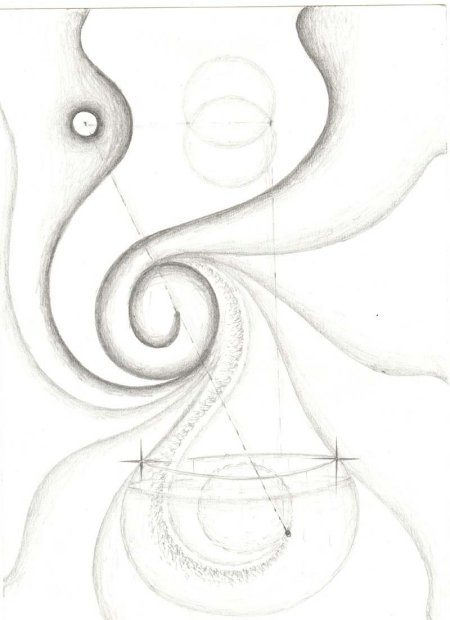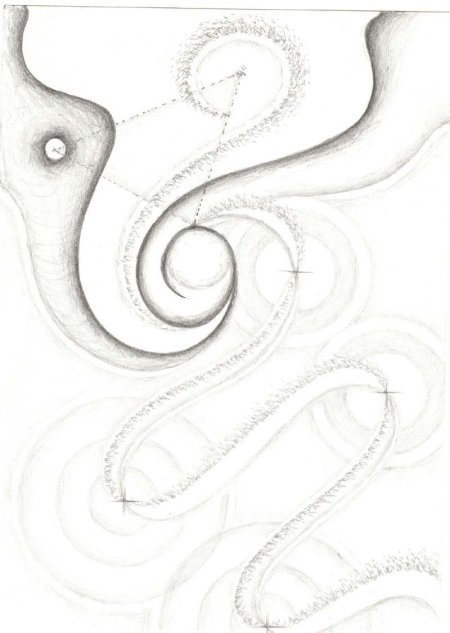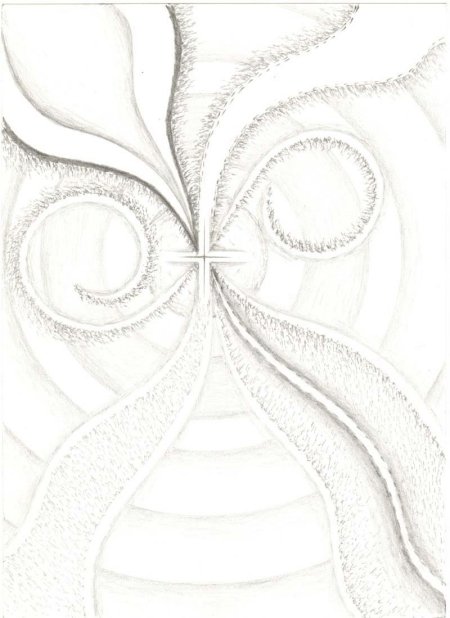In this article I would like to talk about the energy that we work with when we practise Reiki: when we work on ourselves and when we share Reiki with others. The energy that we channel is described in various ways: we are said to be working with universal energy, we are passing on unconditional love, or chi, or prana. But there are aspects of the energy that are not being explained through this use of words, and in this article I want to talk about the essence of Reiki energy. In doing this we will touch on Taoism, QiGong, Shintoism, meditation, breathing, chanting and the use of the Reiki symbols.
Now many people reading this article will be practising something called “Joshin Kokkyu Ho”, an energy breathing method taught in the Usui Reiki Ryoho Gakkai, the Usui Memorial Society in Japan – part of a longer sequence of exercises referred to as “Hatsurei ho”. It was also used in Mikao Usui’s original system, according to a group of Usui Sensei’s surviving students who are in contact with one or two people in the West. Joshin Kokkyu Ho translates as something like ‘technique for purification of the spirit’ or ‘soul cleansing breathing method’, and on its own ‘Kokkyu Ho’ means ‘the way of breathing’. When we use this method we are moving energy in time with our breath, into and out of our Tanden (Dantien in Chinese), it is a way of achieving balance, but there is more significance to this technique than simply moving energy through our bodies.
With each in-breath we are filling the body with ki. This ki is yin in nature, it is the breath of earth, of physicality and the power of separation. By contrast the out-breath distributes ki throughout our bodies. This is yang in nature, it is the breath of heaven, of spirituality and the power of unification. So from the moment that we practise Joshin Kokkyu Ho we are experiencing earth ki and heavenly ki.
In fact, earth ki and heavenly ki are what we are: we are physical reality and we are spiritual essence. In Taoist philosophy, Earth and Heaven – along with Humanity – are known as the “Three Powers”. Humanity is in a pivotal position between the cosmic powers of heaven and the natural forces of earth, covered by heaven above and supported by earth below. Qi Gong, the energy cultivation technique which is practised in Japan as ‘kiko’, allows us to work with these two energies and bring them into balance. Shinto practices also refer to these two basic energies, these two essential aspects of what we really are.
It is not surprising, then, that these two energies are the basis of Usui Sensei’s spiritual system, and latterly his healing system. When we practise Reiki we are working with earth ki and heavenly ki, in a conscious or unconscious fashion; when we channel Reiki, we are channelling either the ki of earth or heaven, because that is what we are.
But Usui Sensei’s system goes further than just acknowledging our true nature, our physical and spiritual nature, because Reiki allows us to fully experience our physical reality, and fully experience our spiritual essence. This is a powerful method for achieving balance. We can return to that state of perfection we enjoyed at birth, before life corrupted us; we can be reborn. How this was achieved is as follows: At second degree in the original system the student would be shown how to experience earth ki and heavenly ki, they would learn to ‘become’ the energies of earth and heaven. How this was achieved very much depended on the student’s background, since Usui Sensei varied his teachings and methods according to the needs of his students. If the student had a Buddhist background then they would have used meditations, and if they had a Shinto background then they would have chanted sacred sounds called ‘kotodama’. Later on in Usui’s system, symbols were introduced for the Imperial Officers, but all these approaches had the same end in mind: to fully assimilate, to fully experience or become the energies of earth and heaven, the essence of what we are. The meditations, the kotodama, and the symbols are all tools used to trigger, to invoke within us, to allow us to experience an energy or a state. Second degree is all about getting to grips with earth ki and heavenly ki, to fully assimilate those energies, to reconnect to what is within and realise our true nature.
CKR and SHK represent earth ki and heavenly ki respectively, but they do not represent something new: these two energies are already within us. They do not represent something additional that we are connected to: they emphasise or flag up something that is already there.
Now, Usui Sensei’s students worked long and hard to assimilate or integrate these energies. The might have spent 6-9 months just meditating on one energy, before moving on, so there were no short-cuts and it was a long process. They started with the energy of earth and moved on to work with the energy of heaven. We can echo that original practice by working with the energies of CKR and SHK. It is not enough to be ‘attuned’ to a symbol – whatever that means – and it is not enough to use a symbol in practice when treating someone. To fully get to grips with an energy we need to meditate on the symbol, using its energy individually, not combined with others, and we need to commit ourselves to doing this regularly if we are going to fully experience the benefits that are available through Usui Sensei’s simple spiritual system.




